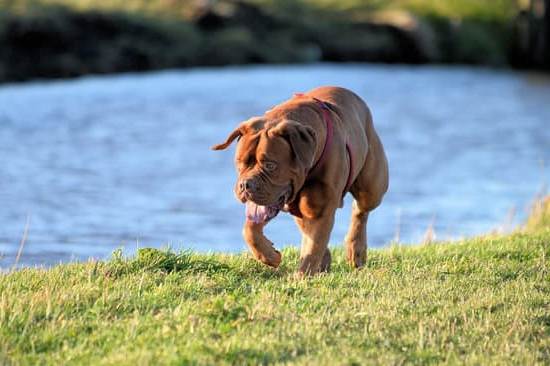Learning how to train your dog for agility can open up a whole new world of excitement and adventure for you and your furry friend. Dog agility has become an incredibly popular sport, captivating audiences with its fast-paced courses filled with jumps, tunnels, weave poles, and more. But it’s not just about the thrill of competition – agility training offers numerous benefits for both dogs and their owners.
First and foremost, agility training is a fantastic way to keep your dog physically fit and mentally stimulated. The rigorous exercises and obstacles on an agility course help to strengthen their muscles, improve their coordination, and enhance their endurance. Additionally, the mental challenges of navigating through a course require dogs to think quickly on their feet, keeping them engaged and preventing boredom.
Training your dog for agility also fosters a strong bond between you and your canine companion. Successfully completing an obstacle course requires effective communication and trust between dog and handler. Through positive reinforcement techniques, you’ll be able to build a deep level of understanding with your dog as they learn to respond to your cues and commands.
In this article, we will dive into the exciting world of dog agility training. We’ll start by discussing the key components of a typical agility course and the equipment used in training sessions. We’ll then explore factors that determine if your dog is suitable for agility training, such as temperament, energy level, and physical abilities. Finally, we’ll provide you with essential training foundations to get started on this thrilling journey with your four-legged friend.
So buckle up and get ready to embark on an exhilarating adventure in dog agility training – where the only limits are those you set.
Understanding the Basics of Dog Agility
Defining the Key Components of a Typical Agility Course
In order to effectively train your dog for agility, it is important to have a clear understanding of the key components that make up a typical agility course. Agility courses are designed to test a dog’s speed, accuracy, and athleticism, while also challenging their handler’s ability to guide them through various obstacles. The most common obstacles found in agility courses include jumps, tunnels, weave poles, and A-frames.
- Jumps: Jumps are one of the most basic and essential obstacles in agility. They can come in different forms such as hurdle jumps or tire jumps, and they test a dog’s ability to clear barriers at different heights and widths.
- Tunnels: Tunnels provide dogs with an opportunity to showcase their fearlessness and determination. Dogs must run through a fabric tunnel, curve around corners, and exit at the other end. It is important for handlers to teach their dogs how to confidently enter and navigate tunnels without hesitation.
- Weave Poles: Weave poles test a dog’s quickness and agility as they navigate through a series of upright poles placed close together. Dogs must learn how to weave in and out of the poles quickly and efficiently without skipping or missing any.
- A-Frames: A-frames are large structures with slanted ramps on each side that dogs must ascend and descend. This obstacle requires balance, control, and confidence from both the dog and handler.
Overview of Equipment Used in Dog Agility Training
To successfully train your dog for agility, it is necessary to have access to certain equipment commonly used in this sport. Some essential equipment includes:
- Agility Jump: An agility jump is used to teach dogs how to jump over specified heights or distances. They come in various designs including bar jumps or panel jumps.
- Agility Tunnel: As mentioned earlier, an agility tunnel provides dogs with an opportunity to showcase their fearlessness and determination. It is a flexible, collapsible fabric tunnel that can be set up in various configurations.
- Weave Poles: Weave poles are used for teaching dogs how to weave through upright poles in a specified order.
- Pause Table: A pause table is a raised platform where dogs must stop and stay for a designated period of time. It tests a dog’s ability to obey commands and maintain focus.
- Contact Obstacles: Contact obstacles such as the A-frame and teeter-totter have specific areas called contact zones that the dog must touch with at least one paw to show control.
The Importance of Communication and Trust Between Dog and Handler
One of the fundamental aspects of successful agility training is the establishment of clear communication between the dog and handler. Dogs rely on their handlers for guidance, direction, cues, and reassurance throughout the course. This communication can be achieved through verbal cues, body language, hand signals, and voice intonation.
Trust between the dog and handler is also crucial. Dogs need to trust that their handler will provide clear instructions and lead them safely through each obstacle. Likewise, handlers need to trust their dogs’ skills, athleticism, and decision-making abilities while navigating the course. Building this bond of trust requires consistent training, positive reinforcement techniques, patience, and understanding between both parties.
By understanding the basics of dog agility courses, familiarizing yourself with relevant equipment, and fostering effective communication and trust between you and your dog, you are setting the stage for a successful agility training journey. In the next section “Evaluating Your Dog’s Suitability for Agility Training,” we will explore how to assess whether your dog is suitable for this sport based on various factors such as temperament, energy level, physical abilities, breed characteristics, age or special needs considerations.
Evaluating Your Dog’s Suitability for Agility Training
To ensure a successful journey in training your dog for agility, it is important to evaluate your dog’s suitability for this sport. Evaluating your dog’s temperament, energy level, and physical abilities will help determine if they are well-suited for agility training. Additionally, understanding the breeds and characteristics that excel in agility can also provide insights into your dog’s potential.
One of the first steps in evaluating your dog’s suitability for agility training is assessing their temperament. Dogs participating in agility need to be confident, adaptable, and eager to please. They should not be easily frightened or overly reactive to distractions. Evaluating their reaction to new environments, loud noises, and other animals can offer clues about their temperament.
Energy level is another factor to consider when evaluating your dog’s suitability for agility training. Agility requires dogs to have a good amount of energy as it involves running, jumping, and navigating obstacles with speed and enthusiasm. High-energy breeds such as Border Collies and Australian Shepherds are often well-suited for agility training.
Physical abilities also play a crucial role in determining if a dog is suitable for agility. Dogs participating in this sport need to be agile, coordinated, and physically fit. They should not have any underlying medical conditions or structural issues that could potentially hinder their performance or cause injury during training.
It is worth noting that while certain breeds may excel in agility due to their natural athleticism and aptitude for learning complex behaviors, any breed can participate in agility with the right approach and training techniques. It is important to modify training techniques for older dogs or those with special needs by considering their physical limitations while still providing them with mental stimulation and physical exercise.
By carefully evaluating your dog’s suitability for agility training based on temperament, energy level, and physical abilities, you can set a solid foundation for success in this exciting sport. Remember that each dog is unique, so it is essential to tailor the training process according to their individual needs and capabilities.
Getting Started
Building a strong bond with your dog
Before diving into agility training, it is crucial to establish a strong bond and trust between you and your dog. Positive reinforcement is key in building this connection. Use treats, toys, or verbal praise to reward your dog for desirable behaviors. Consistency is essential in reinforcing good behavior and avoiding confusion. When starting with basic obedience commands such as sit, stay, and recall, use positive reinforcement techniques to make the learning process enjoyable for both you and your furry friend.
Teaching basic obedience commands
Having a solid foundation of basic obedience commands is fundamental in agility training. Start by teaching your dog these commands in a quiet and controlled environment where distractions are minimal. Consistency is key when practicing these commands daily. As your dog becomes more proficient in these skills, gradually introduce distractions to simulate the challenging environment of an agility course. Ensure that your dog responds reliably to each command before progressing further.
Developing focus and attention in distracting environments
Agility courses can be filled with various sights, sounds, and tempting scents that may distract your dog during training sessions or competitions. Therefore, it is important to work on focus and attention exercises early on. Start by practicing basic obedience commands in increasingly distracting environments such as parks or busy streets. Gradually introduce agility equipment into these environments while maintaining the focus of your dog on you.
By establishing a strong bond, teaching basic obedience commands, and developing focus and attention skills in distracting environments, you are setting the stage for successfully training your dog for agility. Remember that patience and consistency are key during this process. With dedication and practice, you will pave the way for a rewarding journey into the world of agility training with your four-legged companion.
Introducing Agility Equipment and Techniques
Once you have laid a solid foundation with basic obedience training for your dog, it’s time to introduce agility equipment and techniques. This section will guide you through the proper techniques and safety considerations when introducing agility equipment to your canine companion.
It is important to start with the basics and gradually progress to more advanced obstacles as your dog becomes comfortable and confident. Here are some key considerations when introducing agility equipment:
- Jumps: Begin by setting up low jumps that are easily adjustable. Use positive reinforcement to encourage your dog to go over the jump, using treats or toys as rewards. Gradually increase the height of the jumps as your dog becomes more skilled.
- Tunnels: Start with a short tunnel that is straight and without any curves or turns. Encourage your dog to enter the tunnel by using treats or toys as lures. As they become more comfortable, you can introduce curved tunnels and increase the length of the tunnel.
- Weave Poles: Teaching your dog how to navigate weave poles requires patience and practice. Begin with just a few poles spaced apart, encouraging your dog to weave in and out of them using treats or toys as rewards. As they improve, add more poles until you have a full set.
- A-Frames: Introduce the A-frame gradually by allowing your dog to familiarize themselves with walking up and down a slightly inclined board before advancing to the full-sized A-frame obstacle. Use treats or toys as motivation, rewarding them for successful attempts.
Ensuring safety during training sessions is crucial in preventing injuries for both you and your furry friend. Always inspect equipment for any signs of wear or damage before each session, ensuring that it is properly secured and stable. Additionally, make sure there is ample space around the obstacles for your dog to move safely.
Remember that consistency, patience, and positive reinforcement are key when introducing agility equipment and techniques to your dog. Celebrate their progress and reward their successes to keep motivation high. With time and practice, your dog will gain confidence and skills in navigating agility courses.
Key Points:
- Start with basic equipment such as jumps, tunnels, weave poles, and A-frames.
- Use positive reinforcement such as treats or toys to encourage your dog.
- Gradually increase the difficulty level of obstacles as your dog becomes more skilled.
- Ensure safety by inspecting equipment for damage and providing enough space for movement.
Designing Effective Training Sessions for Agility
When it comes to training your dog for agility, designing effective training sessions is crucial. Breaking down the training process into manageable steps will not only help your dog learn and progress, but also keep the sessions fun and engaging. Here are some tips for designing effective training sessions for agility.
Firstly, it’s important to break down the training sessions into smaller, achievable goals. Trying to teach your dog multiple skills or techniques at once can be overwhelming for both of you. By focusing on one skill or obstacle at a time, you can ensure that your dog fully understands and masters each step before moving on to the next. This will help build a solid foundation and confidence in your dog’s abilities.
Rewards play a vital role in agility training sessions. Positive reinforcement has been proven to be more effective than punishment-based methods. Using treats, toys, or verbal praise as rewards can help motivate your dog and reinforce desired behaviors. It’s essential to find out what motivates your individual dog and use those rewards consistently throughout the training sessions.
Clicker training, a form of positive reinforcement that uses a clicking sound to mark desired behaviors, can also be incorporated into agility training sessions. The clicker helps communicate precisely when your dog has performed the correct behavior and reinforces that action with an immediate reward. This method allows for clear communication between you and your dog during training.
To further enhance engagement in the training sessions, consider incorporating structured play and mental stimulation activities. Playing games like tug-of-war or hide-and-seek with agility-related obstacles can make the experience enjoyable for both you and your dog. Mental stimulation activities such as puzzle toys or nose work exercises can also keep their minds sharp while adding an extra layer of challenge to their agility training.
By following these principles of designing effective training sessions for agility, you’ll set yourself and your dog up for success on the course. Remember to have patience, celebrate small successes, and most importantly, enjoy the process of training your dog for agility.
| Effective Training Sessions | Tips and Tricks |
|---|---|
| Break down sessions into manageable steps | This helps your dog learn and progress without feeling overwhelmed. |
| Use rewards for positive reinforcement | Motivate your dog and reinforce desired behaviors with treats, toys, or praise. |
| Incorporate clicker training | Use a clicker to mark desired behaviors and provide immediate rewards. |
| Add structured play and mental stimulation | Incorporate games and activities that engage your dog’s mind while reinforcing agility skills. |
Advanced Agility Training Tips and Tricks
Once you and your dog have mastered the basics of agility training, it’s time to take your skills to the next level with advanced tips and tricks. This section will provide valuable insights and techniques to help you perfect speed, accuracy, fluidity in course runs, as well as train for more challenging obstacles.
One important aspect of advanced agility training is perfecting speed and efficiency on the course. This can be achieved through consistent practice and conditioning exercises. Incorporating interval training, where you alternate between periods of high-intensity activity and rest, can help build your dog’s endurance and speed.
In addition to speed, accuracy is equally crucial when it comes to advanced agility training. The key here is precision in your handling cues and timing. Practice clear communication with your dog by using precise body language, verbal commands, and hand signals to guide them through the course. Keeping a calm demeanor and avoiding unnecessary movements can help prevent confusion or miscommunication with your dog.
Furthermore, incorporating complex obstacles into your training sessions will challenge both you and your dog. Two common advanced obstacles in agility are the teeter-totter and tire jump. The teeter-totter requires careful balance from your dog as they navigate a seesaw-like contraption. Gradually introduce this obstacle by ensuring it is properly secured and offering plenty of praise and rewards for successful attempts.
The tire jump involves jumping through a suspended tire hoop rather than over standard jumps. Start by teaching your dog how to jump over lower jumps first before gradually increasing the height until they are confident enough to jump through a tire hoop. Keep in mind that not all dogs may be comfortable with this obstacle due to its enclosed nature, so always prioritize safety and consider their individual preferences.
By implementing these advanced agility training tips and tricks into your routine, you’ll continue to challenge both yourself and your dog while building upon the foundation established in earlier stages of training. Remember that progress comes with time and patience, so celebrate each achievement along the way. With dedication and consistency, you and your dog can reach new heights in agility training.
| Tips | Tricks |
|---|---|
| Perfect speed and efficiency through interval training | Practice clear communication with precise handling cues |
| Train for advanced obstacles like the teeter-totter | Introduce the tire jump gradually, considering safety and preference of your dog |
Troubleshooting Challenges and Problem Solving
Agility training can be a fun and rewarding experience for both you and your dog. However, just like any training endeavor, there may be challenges and obstacles that you encounter along the way. In this section, we will explore some common issues faced during agility training and provide solutions to help you overcome them.
One of the most common challenges in agility training is fear or anxiety in the agility training setting. Dogs may become fearful or anxious when encountering new environments, equipment, or obstacles. It’s important to remember that patience and understanding are key when helping your dog overcome these fears.
Start by gradually introducing the new elements of agility one at a time, using positive reinforcement techniques such as treats and praise to create positive associations. Provide a safe space for your dog to retreat to if they start feeling overwhelmed, and always prioritize their comfort and well-being during training sessions.
Another challenge you may face is aggression in the agility training setting. This can manifest as leash reactivity towards other dogs or even aggression towards the handler or course equipment. If your dog displays aggressive behavior during agility training, it’s crucial to address it as soon as possible for everyone’s safety.
Seeking professional guidance from a qualified dog trainer or behaviorist is highly recommended in these situations. A professional can assess the underlying cause of the aggression and develop a customized plan to work through it safely.
In addition to seeking professional guidance, participating in agility classes or joining an agility club can also play a vital role in troubleshooting challenges during training. These resources provide not only expert guidance but also a supportive community of fellow agility enthusiasts who can offer advice based on their own experiences. The shared camaraderie among members fosters an environment where challenges can be openly discussed, solutions can be brainstormed, and progress can be celebrated together.
By addressing challenges head-on with patience, understanding, and support from professionals and fellow enthusiasts, you will be well-equipped to overcome any obstacles that come your way during agility training. Remember to stay positive, keep an open mind, and most importantly, have fun with your furry friend as you navigate the exciting world of dog agility.
Taking Your Agility Training to the Next Level
Once you have established a strong foundation in agility training with your dog, you may find yourself wanting to take your skills to the next level and explore the world of competitions and trials. Participating in these events can be an exciting and rewarding experience for both you and your furry companion.
Before diving into the competition scene, it is important to prepare yourself and your dog adequately. This includes ensuring that your dog has a solid understanding of all the obstacles used in agility courses, as well as mastery of basic obedience commands. Practicing regularly in different environments can also help build your dog’s confidence and focus, which will be invaluable during competitions.
Familiarizing yourself with agility-specific rules and regulations is crucial before entering any competitions or trials. Each organization may have slightly different requirements, so it is important to thoroughly read through their guidelines to ensure compliance. Additionally, take note of any specific equipment specifications or handling techniques that are unique to the organization or venue you plan on competing in.
As beginner handlers, it is recommended to start with local, lower-level competitions known as fun matches or run-throughs. These events provide a relaxed environment where you can gain experience without the pressure of formal competition settings. They also serve as great opportunities to observe other handlers, learn from their techniques, and network with fellow agility enthusiasts.
Remember that although prizes and titles are appealing goals, the most important aspect of competing in agility is enjoying the experience with your dog. Keep a positive mindset and celebrate every accomplishment along the way, whether big or small. The bond between you and your dog will strengthen as you navigate through this journey together, regardless of competition outcomes.
Taking your agility training to the next level not only allows you to showcase the skills you have developed but also provides an avenue for personal growth and development. From honing your handling techniques to mastering complex course designs, each competition presents new challenges for both you and your dog to overcome. Embrace the opportunity to learn and grow as a team while enjoying the thrill of agility competition.
Conclusion
In conclusion, agility training has proven to be an exciting and fulfilling activity for both dogs and their owners. Throughout this article, we have explored the fundamentals of dog agility, evaluated a dog’s suitability for training, and discussed essential training foundations. We have also looked at introducing agility equipment and techniques, designing effective training sessions, and advanced agility training tips.
Now that you have gained a deeper understanding of how to train your dog for agility, it is time to unleash the star within them. Agility training not only provides physical exercise but also strengthens the bond between you and your furry friend. The progress and achievements made through agility training are worth celebrating.
Participating in this rewarding sport brings a sense of fulfillment to both you and your dog. The joy that comes from observing your furry companion navigate obstacles with precision and grace is unmatched. Moreover, engaging in agility training encourages mental stimulation for your dog while enhancing their obedience skills.
It is our hope that this article has inspired you to embark on your own agility training journey with your beloved pet. The benefits of dog agility go beyond just competition; it is a lifelong activity that fosters companionship, physical fitness, and mental stimulation. So what are you waiting for? Grab those treats, set up the obstacles, and watch as your canine partner shines as an agility star.
Frequently Asked Questions
How do I start training my dog for agility?
To start training your dog for agility, it is important to establish a foundation of basic obedience commands such as sit, stay, and come. These commands will form the basis for more advanced agility skills. Next, introduce your dog to newly acquired agility equipment in a positive and gradual manner.
Begin with basic obstacles like jumps or tunnels and gradually progress to more complex obstacles like weave poles or A-frames. Use treats or toys as rewards to encourage your dog’s motivation and engagement during training sessions. It is crucial to maintain a positive and patient approach throughout the training process, ensuring that both you and your dog enjoy the experience.
What age should a dog start agility?
The ideal age for a dog to start agility can vary depending on breed, size, and individual development. Generally, it is recommended to wait until a dog is at least one year old before starting agility training as their bodies need time to mature and fully develop musculoskeletal strength.
However, this may vary for larger breeds or those prone to skeletal disorders, where waiting until 15-18 months of age might be advisable. It’s crucial to consult with your veterinarian before beginning any intense physical activity such as agility training and ensure that your dog is fit and healthy enough to participate safely.
What are the commands for agility dogs?
Agility dogs are typically trained using a set of standardized commands that allow handlers to effectively communicate with their dogs during competitions or practice sessions. The most common commands used in agility include “sit,” which encourages the dog to position itself in a sitting position; “stay,” instructing the dog to remain in place until released by the handler; “heel,” which prompts the dog walk closely beside its handler; “wait,” indicating that the dog should pause momentarily without moving forward; “take it” or “get it,” allowing the dog to grab an object with their mouth, usually used for retrieving exercises; “down,” instructing the dog to lie down on its belly; “over” or “jump,” indicating that the dog should jump over an obstacle; and “weave” or “poles,” cueing the dog to navigate through a series of weaving poles.
Consistent training and repetition will help dogs associate these commands with specific actions and perform them reliably.

Welcome to the blog! I am a professional dog trainer and have been working with dogs for many years. In this blog, I will be discussing various topics related to dog training, including tips, tricks, and advice. I hope you find this information helpful and informative. Thanks for reading!





